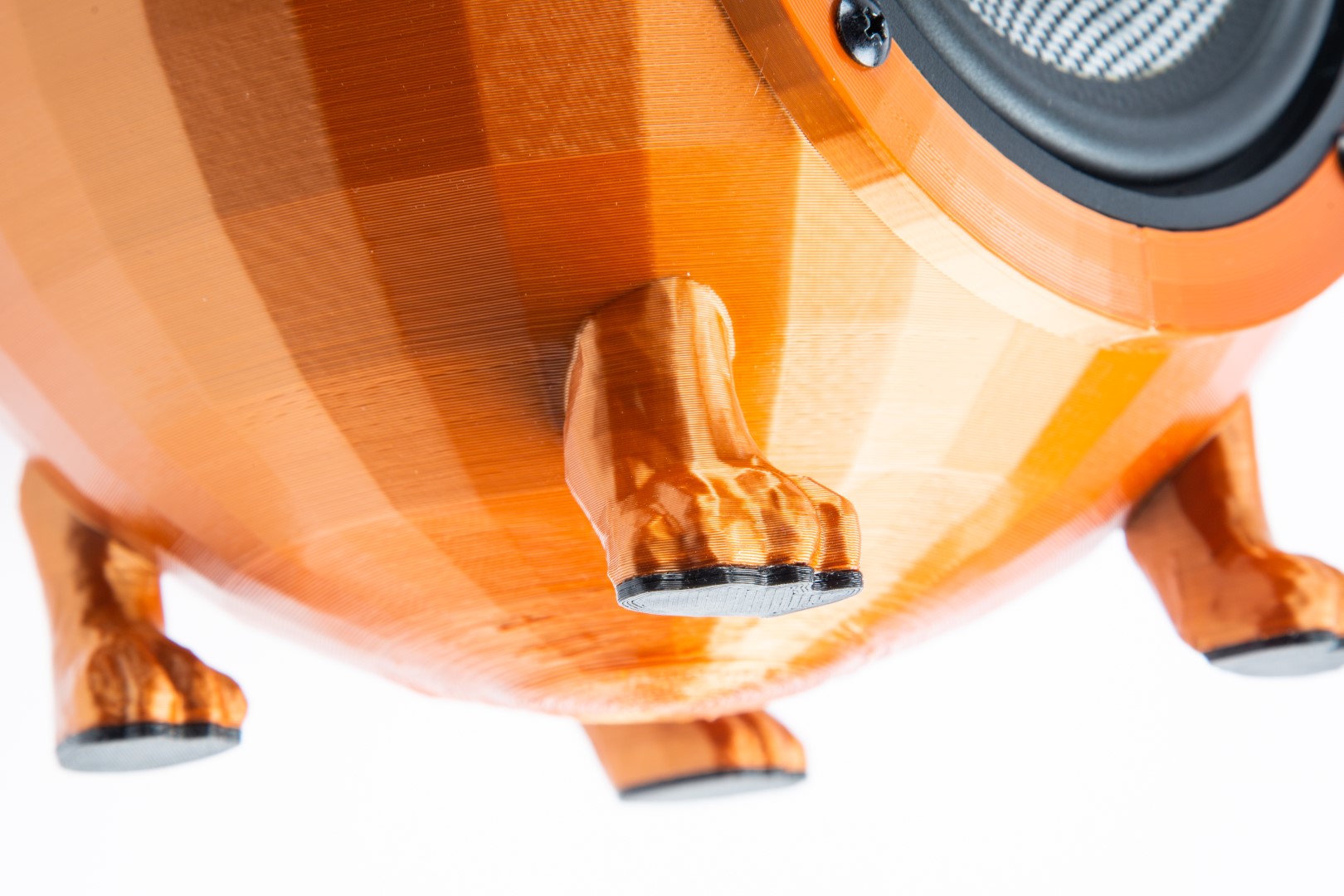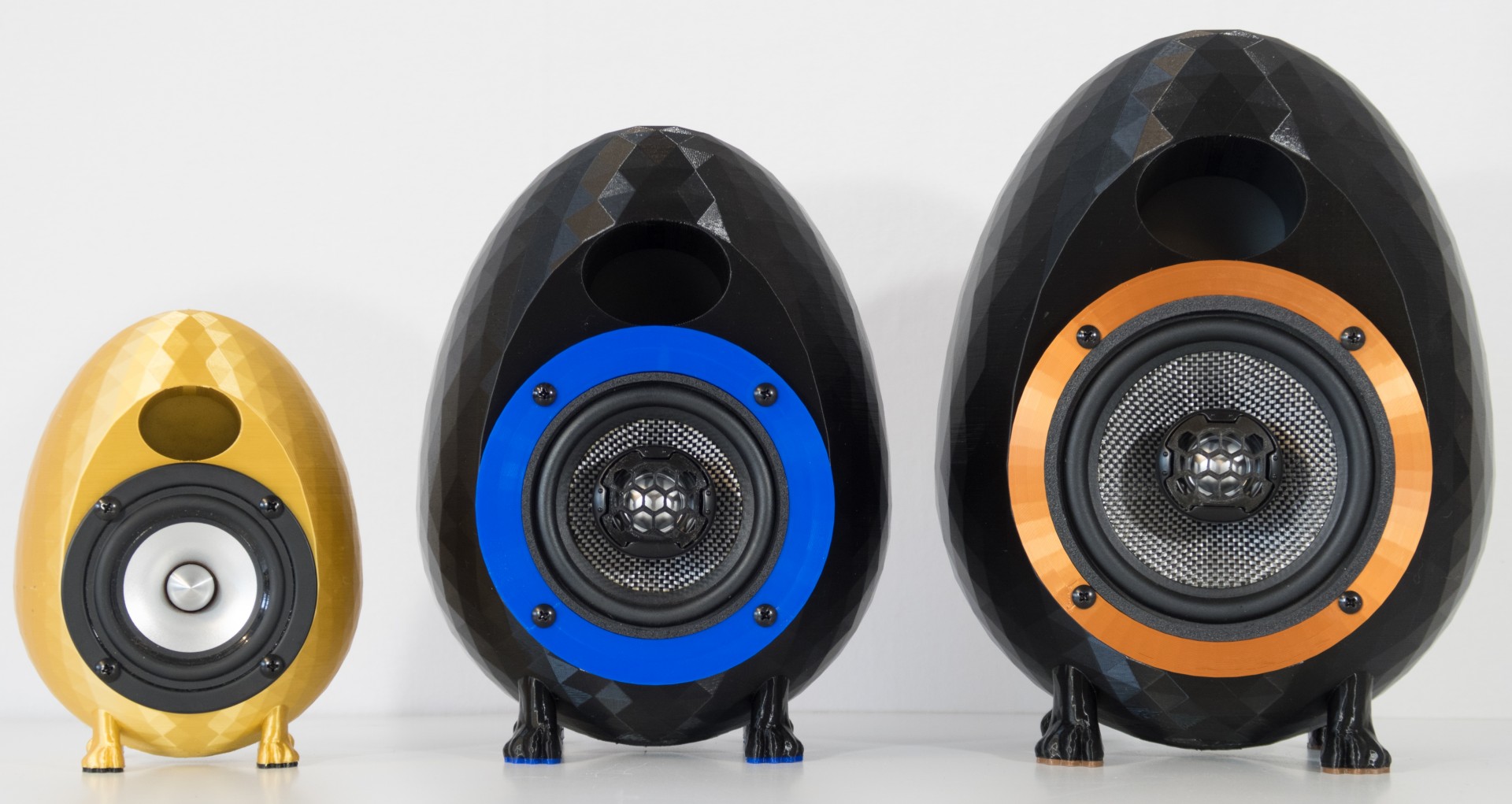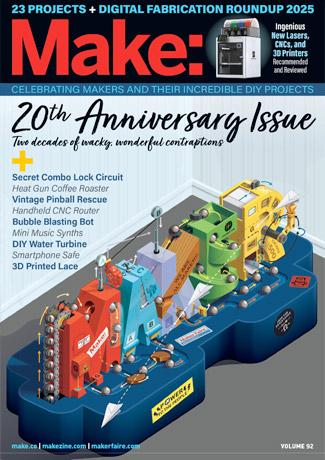After building speakers and amps for 20 years, I got into 3D printing last year and wanted to see if it was possible to make a good speaker enclosure this way. After looking at some 3D-printed parts my friend had made, and seeing how strong they could be, I was inspired to try.

The result: A pair of good-looking speakers that truly sound great, with no sharp corners to impede airflow inside the cabinet. The “egg” has always been one of the holy grails of cabinets in the hi-fi world, but they’re hard to make in a conventional way. Now it’s much easier with 3D printing.
I learned a lot about using infill settings to create an air gap between the inner and outer walls. This helps a lot — instead of just having solid plastic, the air gap dampens the pressure from inside, so the outer wall has less resonance. Material and wall thickness have the biggest effect on holding in the sound pressure, so you get more sound pressure in the listening room.
It’s been a long process in getting the ratios “right” but I’m so amazed at the sound coming from such small speakers. You can make your own pair for about $100. It’s an easy build; only basic soldering skills are required.
BUILD A PAIR OF AUDIOPHILE EGG SPEAKERS


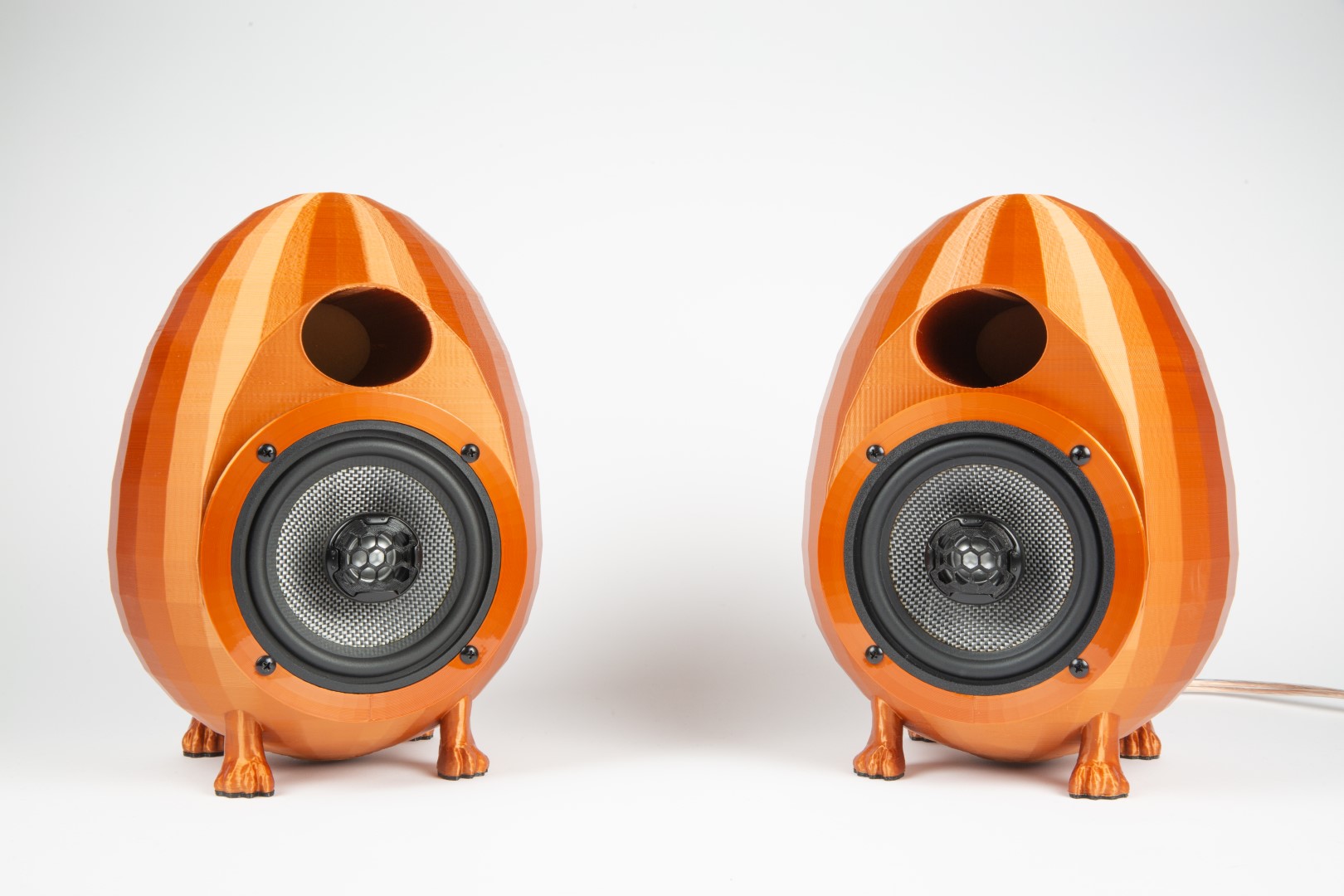
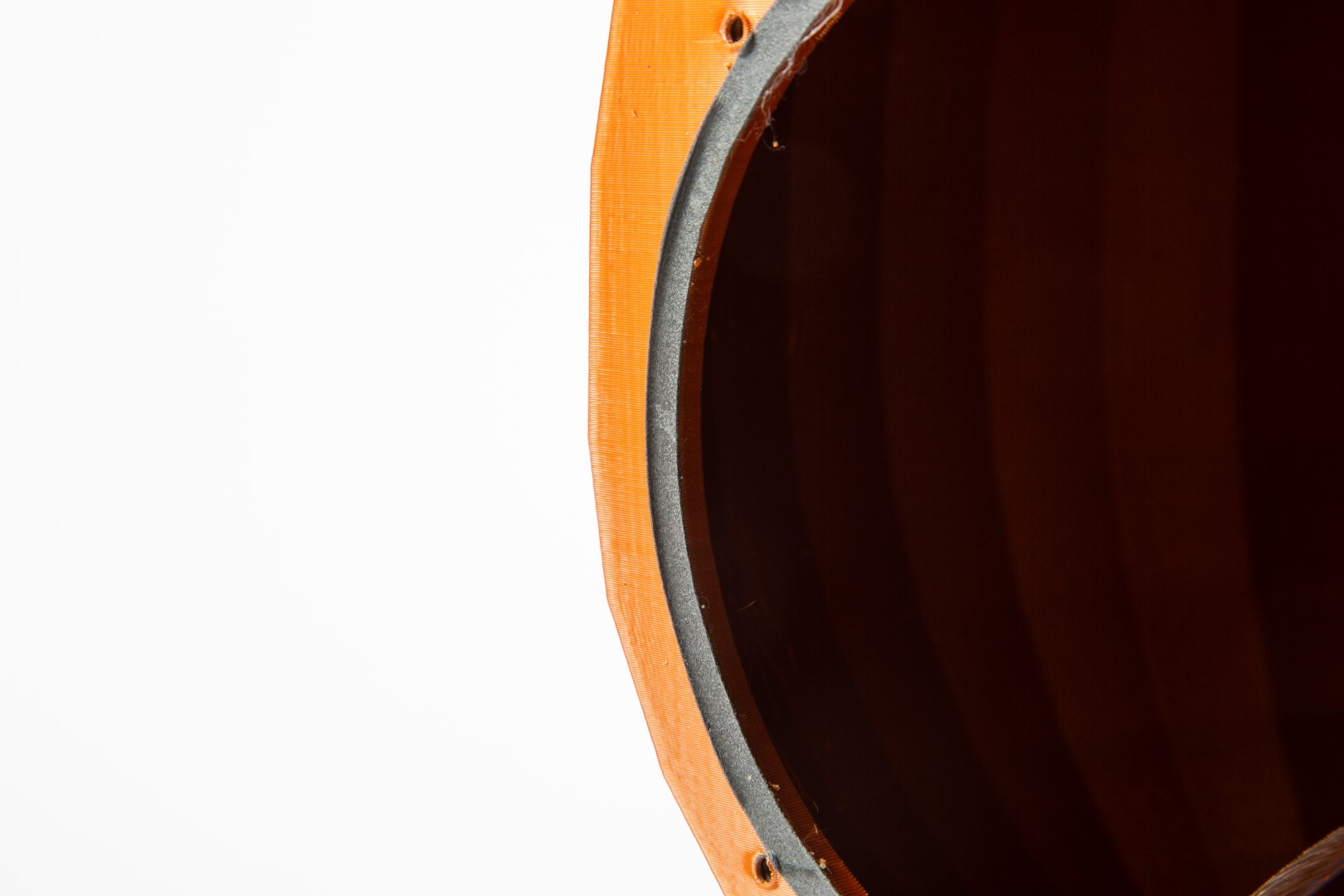

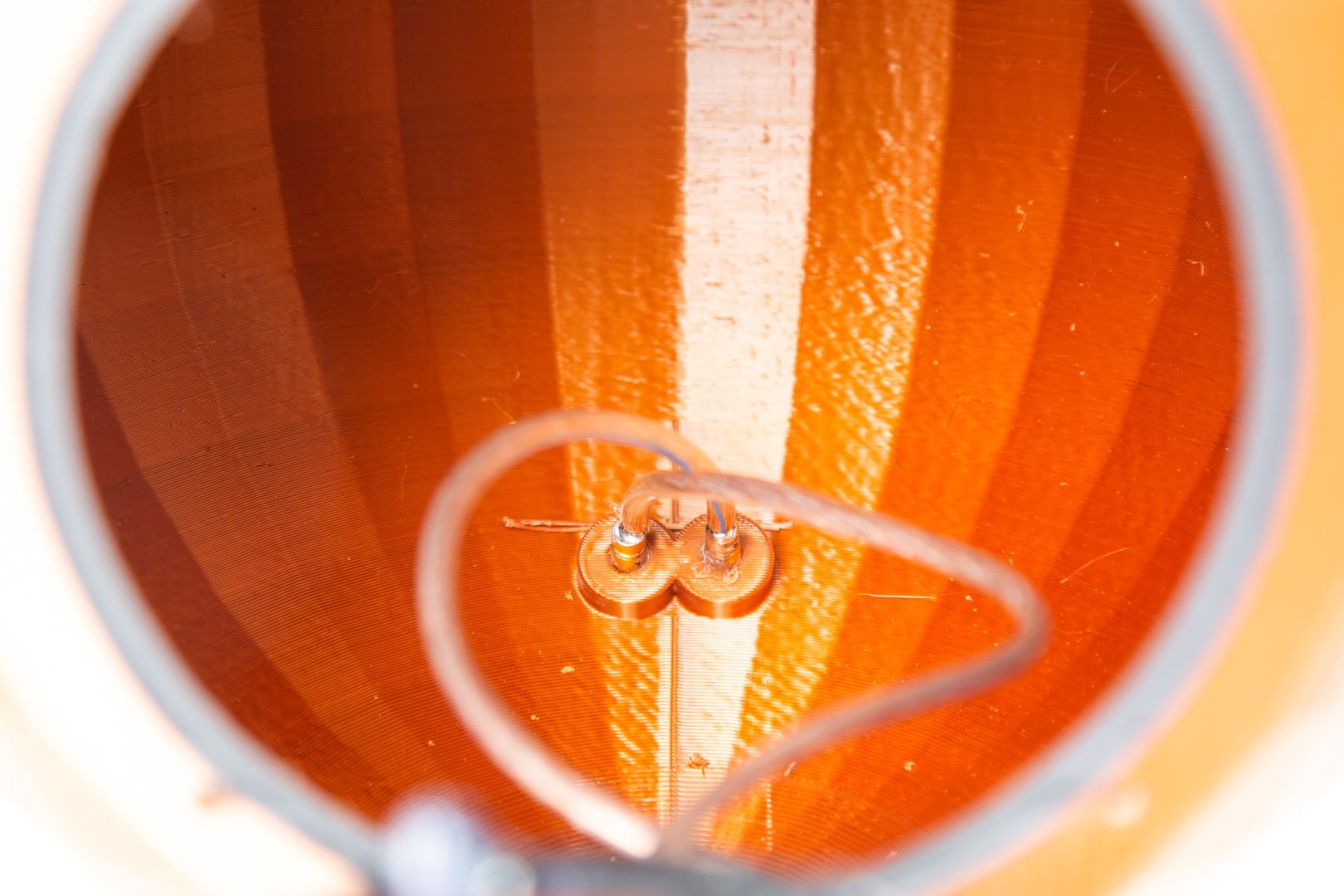

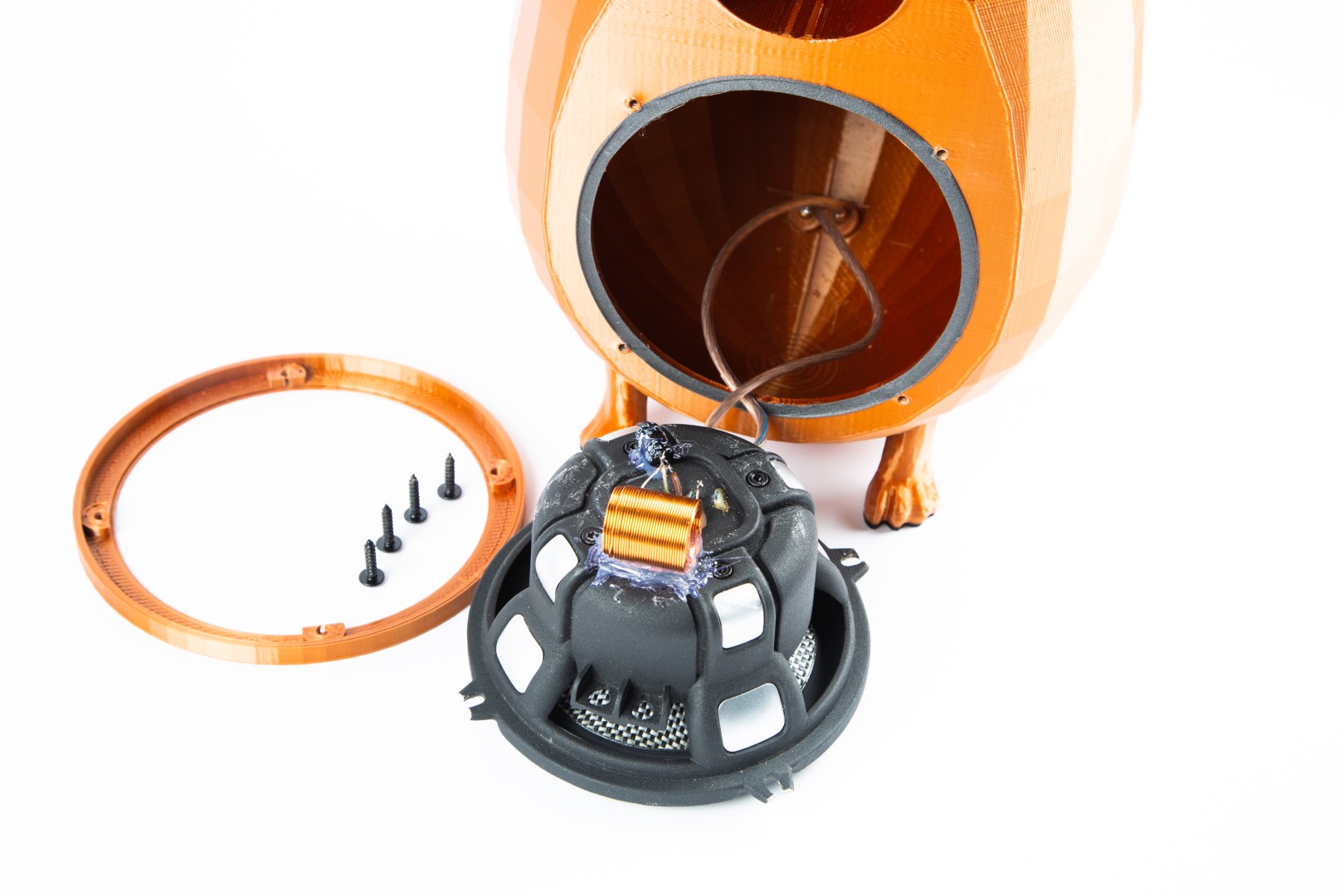 Connect your speaker of choice to the bare end of the speaker wire, then put on the ring, and screw it in.
Connect your speaker of choice to the bare end of the speaker wire, then put on the ring, and screw it in.